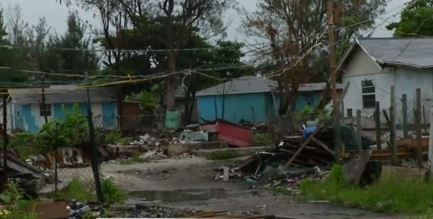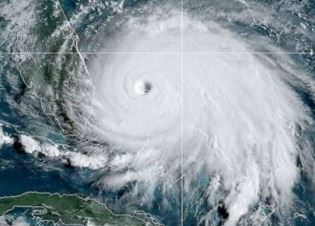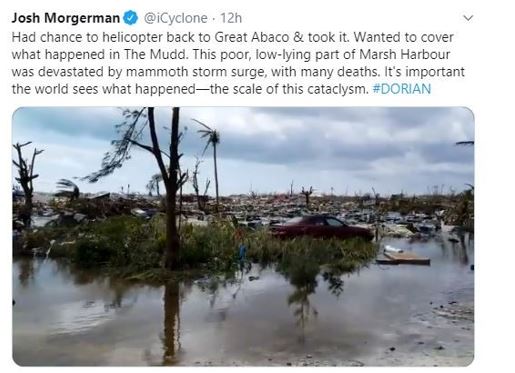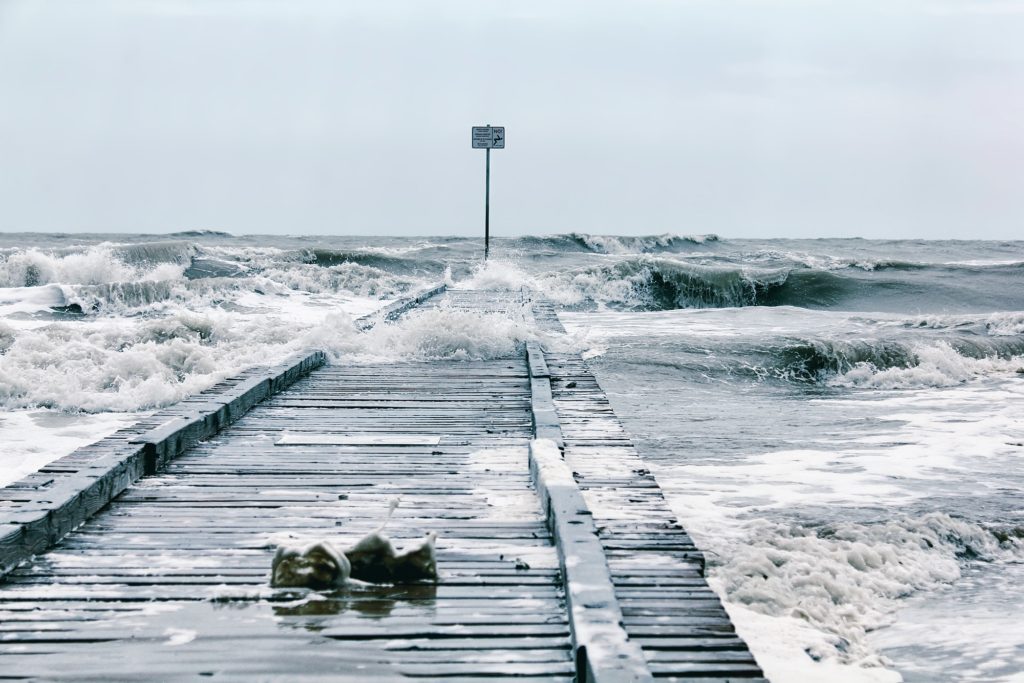On September 1, 2019 in the northwest Bahamas residents of the Marsh Harbour’s shantytowns of Mud and Pigeon Pea encountered the incredible wrath of Category 5 Hurricane Dorian. The towns are all part of Great Abaco Island. One can easily make the argument that history was changed forever for hundreds of residents who inhabit these locations.
Mud and Pigeon Pea is mainly inhabited by Haitian immigrants who moved to the Bahamas supposedly to better their lives.
Almost all of these residents were living under incredibly harsh conditions without basic necessities. To make matters worse, Haitian immigrants had been treated as second class citizens at best.
In fact, the Bahamian government was developing a plan to knock down dwellings in these areas. No matter what had been going on before September 1st, the fate of these towns and its inhabitants have was changed forever. What they will be changed to is questionable
Haitian immigrants have been moving to the Bahamas for centuries for various reasons. In the 1970s, many Haitians departed as refugees to flee the “reign of terror” inflicted by President Jean Claude Duvalier, nicknamed “Baby Doc”. Some of these refugees came to the United States and others fled to the Bahamas.
A significant number of Haitians who went to the Bahamas inhabited an area in the town of Marsh Harbor on Great Abaco Island. A road and a softball field separated two shanty towns within Marsh Island that became known as Mud and Pigeon Pea. The Mud received its name because it was a low-lying area that often floods when heavy rain moves in. Pigeon Peas are a perennial legume that was likely harvested by Haitian immigrants in the area.
By 1980, several dozen shanty houses were scattered around the area. Many Haitian migrants took agricultural jobs for large companies that no one else wanted to do. When the large companies moved out, many migrants went to work on private farms across the island.
In the subsequent decades, the shanty towns grew in size. Living conditions became crowded and literally un t for humans. Most residents have been living at or below the poverty level. The streets were strewn with wires as some residents and business owners attempted to connect to an electrical grid.
Much of the electricity that was used for lighting was obtained illegally and that posed a definite fire danger. In fact, res have been a persistent problem over the years, including earlier this year.
Most homes were constructed illegally and they were well below existing building codes.
Since Haitian migrants are undocumented and the government has conducted a number of raids over the past couple of years. Anxiety always runs high in the community.
Pre Dorian Assessments
In 2019, the government of the Bahamas conducted surveys in the shanty towns in order to demolish them. An article in the abaconian, which is a newspaper publication, gave this description of the situation on August 29th.
In The Pigeon Peas, a report indicated that there are 300 residences and 30 commercial shops and of those homes, 150 had septic tanks and 15 made use of outside toilets.
In The Mud, which is the biggest of the three predominantly Haitian communities, there are 600 residences and 45 commercial shops. There are 100 septic tanks and six outside toilets.
Researchers said that “Many of the long-term shanty town occupants express those new arrivals do not have the same reverence for proper hygiene and respect for law and order, resulting in the decline of the towns.”
Noting how these communities operate outside of the requirements for proper sanitation, without regard to the building code and in violation of safety requirements for electricity, government officials were concerned about the possibility of diseases such as cholera being born because of the unsanitary disposal of human and other forms of waste.
Here was another description of the situation that was published the Nassau Guardian.
Abaco has at least three major shantytowns – the Mudd, Pigeon Peas and Sandbanks. The Mudd and Pigeon Peas have no legal electricity, water or sewerage connections. Ed Newell, a broker based in Abaco, told The Nassau Guardian earlier this year that if you drive by the area at night, it’s “lit up”.
There are small food stores, clothing stores, barbershops and apartments in the areas. Reportedly, it costs $60 a week to rent a one-room dwelling.
According to a shanty town report compiled under the Christie administration in 2013, the Mudd and Pigeon Peas had 900 homes, and Sandbanks had over 100. Some residents in the Mudd said they are not sure what they would do if the government destroys the community. Tellis Doetelen, 63, a seven-year resident of the Mudd, told The Guardian earlier this year, “I built that little home because I can’t pay no rent. “Tear it down, but I don’t know where I would go. I do not know because I don’t have no money.”
Their situation was already dire. How could it POSSIBLY get any worse? That question looked pretty easy to answer until September 1st when the unthinkable occurred.
An image photo showing dwellings in the shantytown of Mud on Great Abaco Island before Hurricane Dorian destroyed the area, Photo Credit-YouTube.
The “Impossible” Hurricane – Total Destruction
Over the last several days of August, a tropical cyclone named Dorian was being tracked across the western Atlantic. Dorian arrived in the Virgin Islands as a Category 1 hurricane and it began to strengthen. The forecast was for it to strengthen even more and that it could pose a threat to the northwest Bahamas as its forward speed slowed considerably.
It should be mentioned that Category 5 hurricanes in the Atlantic Basin are rare. The highest wind speed for any Atlantic Basin hurricane was Allen in 1980 as it was parked over the Gulf of Mexico. As Hurricane Dorian approached the northwest Bahamas it was a Category 5 hurricane with maximum sustained winds of 185 mph. No hurricane of this intensity had made landfall in the Atlantic Basin in recorded history. No hurricane of this intensity had ever stalled over any landmass either but in this case, BOTH occurred at the same time.
A satellite image of Category 5 Hurricane Dorian as it stalled over the northwest Bahamas on September 2019. Photo Credit-NOAA.
For hour after hour after hour, Great Abaco Island and the town of Grand Marsh, which included Mud and Pigeon Pea, was battered by catastrophic winds. Debris from collapsing structures was being hurdled through the air. Sheets of rain was relentless, An incredible storm surge sent the surrounding ocean over the land and swallowed up anything that the wind didn’t destroy.
I can’t imagine being in those conditions. Some described residents swimming for their lives or clinging to rooftops, doing anything to stay alive, There were reports of bodies floating in the water. The scene was described as chaotic with people moving in every direction with some of them carrying children or the elderly looking for ANY place of safety. The eye of the hurricane passing over the area actually saved lives.
As a result, some residents had the time to find their local primary school or a government building which became makeshift shelters. When the other side of the hurricane arrived. Hurricane conditions went on and on and it probably felt like it would never end.
When it was over, those who survived were in a state of shock. There was nothing left, many were looking for their loved ones.
For hour after hour after hour, Great Abaco Island and the town of Grand Marsh, which included Mud and Pigeon Pea, was battered by incredible winds. Debris from collapsing structures was being hurdled through the air. Sheets of rain was relentless, An incredible storm surge sent the surrounding ocean over the land and swallowed up anything that the wind didn’t destroy.
I can’t imagine being in those conditions. Some described residents swimming for their lives or clinging to rooftops, doing anything to stay alive, There were reports of bodies floating in the water. The scene was described as chaotic with people moving in every direction with some of them carrying children or the elderly looking for ANY place of safety. The eye of the hurricane passing over the area actually saved lives.
As a result, some residents had the time to find their local primary school or a government building which became makeshift shelters. When the other side of the hurricane arrived. Hurricane conditions went on and on and it probably felt like it would never end.
When it was over, those who survived were in a state of shock. There was nothing left, many were looking for their loved ones. The following tweet was posted by Elizabeth Pears who is a News Editor for BuzzFeed UK.
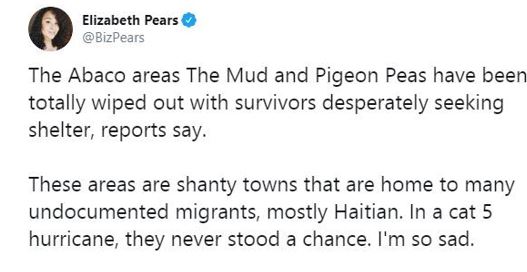 Hurricane chaser Josh Morgerman was there in Grand Marsh during the storm and he later posted this on twitter.
Hurricane chaser Josh Morgerman was there in Grand Marsh during the storm and he later posted this on twitter.
 The official death toll in the Bahamas was listed at 74. Because many residents of the shanty towns were undocumented, we will never know the total number but some say it was in the hundreds.
The official death toll in the Bahamas was listed at 74. Because many residents of the shanty towns were undocumented, we will never know the total number but some say it was in the hundreds.
The United States Military sent Coast Guard personnel and Marines to help with rescue and recovery operations. International organizations like the Red Cross has been sent food, water, and other necessities to areas that were devastated by Hurricane Dorian.
There is no way of knowing what would have happened if the Bahamian government had gone ahead with the demolition of the shantytowns. The process could have taken months or even years. Hurricane Dorian was able to accomplish that in two days.
The Shanty Town Situation In 2025
Because of Hurricane Dorian, the shanty towns homes, businesses, and the lives some survivors family members were obliterated. The psychological harm linger to this day and beyond !
Shanty town structures have grow n significantly in the years since Hurricane Dorian destroyed large shantytowns on Abaco, Central and South Abaco (member of parliament) John Pinder said to the media, adding that the situation is “extremely concerning”.
“The Mudd and the Pea have actually just moved a little bit north closer to Treasure Cay and it’s as big as it ever was,” Pinder told The Nassau Guardian. “It is mind-boggling.”
It’s been only in the past year that concrete plans for rebuilding the towns have once more come to the fore. The demolition and rebuild is scheduled to begin but many residents haven’t been in the communications loop and they are afraid that they will be displaced with nowhere to go.
This image, from July 2025, showing employees of the Bahamian government making an assessment in preparation for a rebuild of the shanty towns on Great Abaco Island. Image credit- You Tube.
At the present time, this topic is being covered extensively by the Bahamian news media but how it will play out is still a major concern. Hopefully, there wont be any major hurricanes around for a long time.

